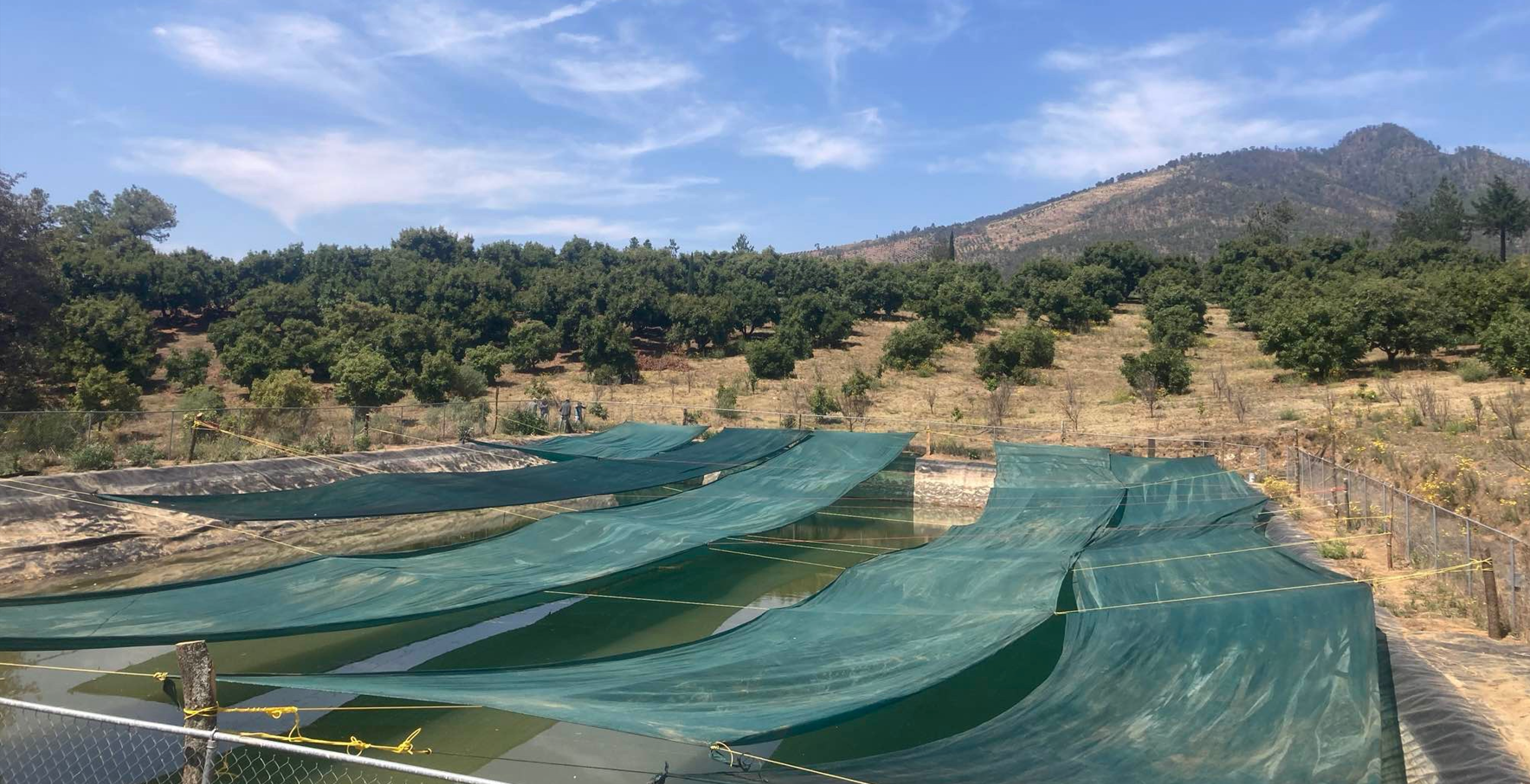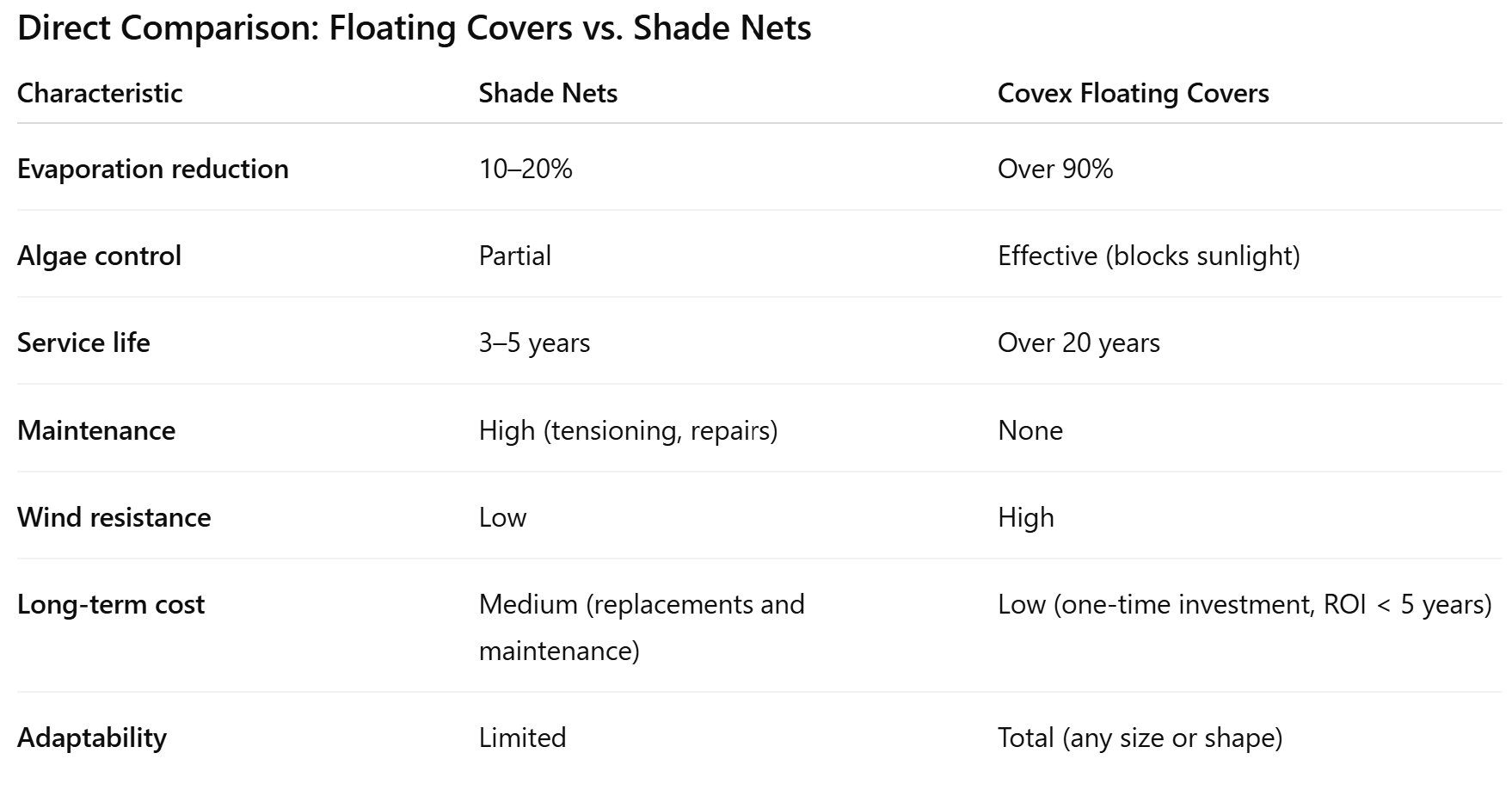12.10.2025
Floating Covers vs. Shade Mesh: Which Is the Best Investment toProtect Your Reservoir?
Evaporation
Algae

Floating Covers vs. Shade Mesh: Which Is the Best Investment to Protect Your Reservoir?
When looking for solutions to reduce water evaporation in reservoirs (agricultural,mining, industrial, etc.), two main options usually appear on the market: installing shade nets or floating covers.
At first glance, shade nets seem like a more affordable alternative. However,when evaluating real efficiency, maintenance costs, and lifespan, floating covers prove to be a far better long-term solution.
In this article, we’ll analyze both technologies and explain why floatin gcovers have become the preferred choice for companies seeking adefinitive and reliable way to protect their reservoirs.
The Common Problem: Evaporation and Algae
Evaporation causes millions of liters of water to be lost every year due to exposure to sun and wind. At the same time, algae blooms—driven by sunlight and nutrient buildup—degrade water quality, increase maintenance costs, and reduce the efficiency of irrigation and industrial processes.
Shade Nets
Shade nets have been used for years to cover reservoirs. They are made from plastic fabrics that reduce solar radiation.
Advantages:
· Low initial cost.
· Partial reduction of sunlight.
· Easy to install (for smallsurfaces).
Disadvantages:
· Incomplete coverage: Shade nets do not block wind or seal the water surface, so evaporation continues.
· High maintenance: They tear easily with wind and require anchors, tensioners, and frequent repairs.
· Limited lifespan: Typically 3–5 years before losing UV resistance.
· Operational risks: If the net falls into the water, it can get tangled in pumps or suction systems.
In summary, shade nets are a partial and temporary solution, but they do not ensure full protection of water resources nor effectively prevent algae growth.
Floating Covers
Modular floating covers are installed directly on the water surface, adapting to any shape or size of reservoir. They are made of HDPE (high-density polyethylene) with UV and antioxidant additives, ensuring a lifespanof over 20 years, even under extreme conditions.
Advantages:
1. Maximum efficiency: Reduce up to 97% of evaporation.
2. Algae control: By blocking sunlight and preventing photosynthesis, algae cannotproliferate.
3. Durability: UV-protected and mechanically resistant materials.
4. Zero maintenance: No need for tensioning or frequent repairs.
5. Operational safety: Allow floating access for pump and equipment maintenance.
Additional benefits:
· Improve water quality byreducing dust, sediment, and bacteria.
· Lower water temperature duringsummer, optimizing agricultural and industrial processes.
· Contribute to water circularityby recovering millions of liters annually.

Although shade nets have a lower upfront cost, once you factor in replacements, repairs,chemicals, and water loss, they end up being more expensive in the long run.
Floating covers, on the other hand, offer an average return on investment (ROI) of around five years, depending on reservoir size, water value ineach region, labor costs, and algae treatment expenses.
Companies truly committed to protecting their water resources must look beyond the initial cost.
Shade nets offer a partial and short-term solution, while floating covers deliver efficiency, durability, and sustainability — the smart choice for long-term water conservation.
Share